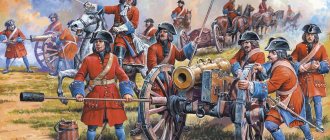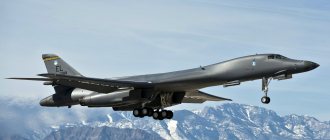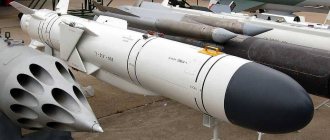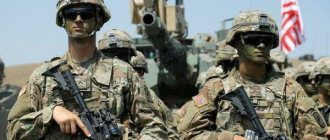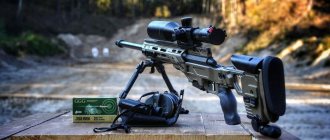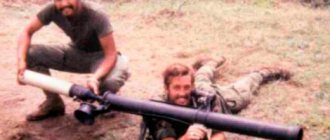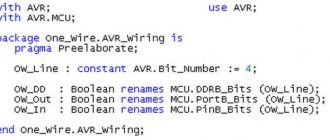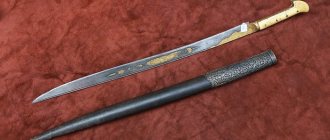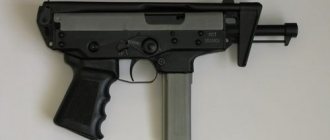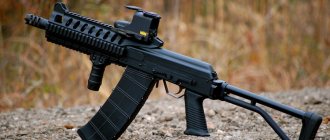In the 21st century, a large number of modern states strive for peaceful coexistence with other countries. In other words, people are tired of wars. This trend began to gain momentum after World War II. This conflict made it clear that the next large-scale clash could endanger not only the foundations of the world, but also the existence of humanity as a whole. Therefore, today many armies are used exclusively to organize internal defense against any external aggressors. Nevertheless, local conflicts still arise in certain parts of the planet. There is no escape from this negative factor. To prevent a full-scale war, some states invest a lot of money in the defense of their country. This helps create the latest technologies that can be used in the army field. It is worth noting that the Turkish Armed Forces are one of the most developed and effective today. They have a rather interesting history, which determines many traditions of formation that exist in its activities to this day. At the same time, the Turkish army is well equipped and also divided into component structures that help it effectively implement all its main tasks.
History of the Turkish Armed Forces - early period
The Turkish army dates back to the 14th century AD. It should be noted that the armed forces of this period belonged to the Ottoman Empire. The state received its name after the first ruler, Osman I, who conquered several small countries, which necessitated the creation of a monarchical (imperial) form of government. By this time, the Turkish army already had several separate formations, which were used quite effectively in the implementation of combat missions. What did the Armed Forces of the Ottoman Empire have in their composition?
- Seratkula's army is an auxiliary force. As a rule, it was created by provincial rulers to protect their possessions. It consisted of infantry and cavalry.
- The professional state army was the army of the capicula. The formation included many units. The main ones were infantry, artillery, navy and cavalry. Funding for the capicula army came from the state treasury.
- The auxiliary forces of the Ottoman army were the Toprakli army, as well as detachments of fighters recruited from the provinces subject to tribute.
The influence of European culture marked the beginning of many changes in the army. Already in the 19th century, the formations were completely reorganized. This process was carried out using European military experts. The vizier became the head of the army. At the same time, the Janissary corps were liquidated. The basis of the armed forces of the Ottoman Empire at that time was regular cavalry, infantry and artillery. At the same time, there were irregular troops, which were actually a reserve.
TURKISH NAVY
The naval forces organizationally include four commands - the navy, the Northern and Southern Naval Zones (VMZ) and the training one. This branch of the Armed Forces is headed by a commander (army admiral), who reports directly to the Chief of the General Staff of the Armed Forces. The Commander of the Navy is operatively subordinate to the command of the Defense and Defense Forces, which in peacetime is under the jurisdiction of the Ministry of Internal Affairs. The commander exercises leadership of the naval forces through the headquarters located in Ankara.
The country's navy is designed to perform the following main tasks:
- conducting combat operations in a naval theater of operations with the aim of destroying groups of enemy surface ships and submarines at sea and at bases (location points), as well as disrupting its sea communications;
- ensuring the safety of maritime transport carried out in national interests;
- providing assistance to ground forces in conducting operations in coastal areas; conducting amphibious landing operations and participating in repelling enemy landings;
- ensuring the safety and security of sea ports;
- participation in operations to counter terrorism, illegal trafficking in weapons, drugs and contraband goods, as well as the fight against poaching and illegal migration;
- participation in operations of NATO, the UN and other international organizations.
In peacetime, the naval command is entrusted with the tasks of organizing operational and combat training of naval units and units. With the transition to wartime, it carries out mobilization and operational deployment in accordance with the developing situation, relocates naval personnel to the appropriate area and carries out combat missions by order of the General Staff.
The lead corvette F 511 Heybeliada, built under the MILGEM program, was launched on September 27, 2008. |
The Navy has over 85 warships (including 14 submarines, eight guided missile frigates, six corvettes, 19 mine-sweeping ships and 29 landing ships), more than 60 combat boats, about 110 auxiliary vessels, six basic patrol aircraft ( UUV) and 21 helicopters.
The core of the Turkish fleet consists mainly of ships of foreign projects. The submarines are represented by Project 209, several modifications of German design. American frigates of the Knox and O.X. types. Perry" were transferred to Turkey under the military assistance program.
The Navy is based on an extensive network of naval bases and bases in the Black Sea (Eregli, Bartin, Samsun, Trabzon), the Strait Zone (Golcuk, Istanbul, Erdek, Canakkale), the Aegean and Mediterranean Seas (Izmir, Aksaz-Kara Agac, Foca, Antalya, Iskenderun).
The basis of the Navy is the command of the naval forces (headquarters in Aksaz-Karaagach), which includes four flotillas - combat, submarines, missile boats, a mine, as well as a division of auxiliary ships, groups of reconnaissance ships, a naval air base and a shipbuilding plant.
The combat flotilla is intended primarily to combat enemy submarines, surface ships, amphibious assault forces and lay active minefields in naval base areas, on fairways and likely routes of enemy convoys. It includes five frigate divisions (21 ships).
The submarine flotilla (Golcuk) is assigned the following tasks:
- destruction of enemy amphibious forces as they leave their bases and while crossing by sea;
- disruption of sea communications and laying minefields at exits from bases and likely routes for enemy landing ships;
- ensuring the actions of reconnaissance and sabotage groups of combat underwater saboteurs.
Organizationally, it consists of three submarine divisions (14 units) and a group of torpedo catchers (two ships).
The flotilla of missile boats (Golcuk) is called upon to fight enemy surface ships and landing forces on the near approaches to landing-accessible sections of the Turkish coast, as well as to lay active minefields at the entrances to naval bases. The flotilla includes three divisions of missile boats (12 units).
The mine flotilla (Erdek) in wartime comes under the command of the Northern VSW. Its main tasks are laying minefields and sweeping mines in the areas of the Bosphorus and Dardanelles straits and the Sea of Marmara. The flotilla includes two divisions of minesweepers (30 units).
The division of auxiliary vessels (Golcuk) is designed to comprehensively supply warships located in the roadstead and at forward bases. It includes more than 70 vessels of various types.
The Naval Aviation Air Base (Topel) is armed with base patrol aircraft and anti-submarine helicopters, which are designed to combat submarines, destroy light surface targets, conduct reconnaissance of naval groups, formations of landing ships and enemy convoys, as well as for laying active minefields and providing actions of groups of combat underwater saboteurs. The air base includes the 301st Base Patrol Aviation Squadron (13 CN-235MP, of which seven are training) and the 351st Anti-Submarine Helicopter Squadron (nine AB-212/ASW, seven S-70B Sea Hawks, five combat support helicopters AB-212/EW).
Northern VMS Command (Istanbul) solves the problems of providing basing, combat training and organizing combat duty for naval formations with a zone of responsibility in the Marmara and Black Seas. It includes five commands: the Bosphorus region (Istanbul), the Dardanelles region (Canakkale), the Black Sea region (Eregli), underwater and rescue operations (Beykoz), as well as underwater sabotage forces and assets (Beykoz).
The command of the Southern VMS (Izmir) in peacetime is called upon to provide basing, combat training and combat duty for naval formations in the Aegean and Mediterranean seas.
Organizationally, it includes the command of the Aegean Sea region (Izmir) and the command of the Mediterranean Sea region (Mersin).
The BCHR command (Ankara) has 91 patrol boats (PBO) of various classes, three CN-235 aircraft equipped with equipment for maritime reconnaissance, as well as eight AB-412ER transport helicopters. The command of the Civil Defense Forces in peacetime is part of the Ministry of Internal Affairs and is resubordinated to the commander of the Navy in a crisis situation.
Turkish marines during exercises at one of the training grounds on the country's Black Sea coast |
The Turkish Navy's marines are intended to participate in independent landing operations to seize and hold beachheads on the shore, as well as in combat operations in coastal areas together with units of the ground forces with the support of the air and naval forces. In total, the Navy includes one brigade and six battalions with a total number of 6.6 thousand military personnel, armed with M-48 tanks, M113 armored personnel carriers, mortars and small arms.
Coastal artillery and missile forces of the Navy are represented by nine divisions and a separate battery of coastal artillery, seven anti-aircraft artillery divisions, three batteries of Penguin anti-ship systems (two in Çanakkale and one in Foch and one - "Harpoon" (Kecilik). The number of personnel in these units is 6,300 people.
The program for the development and modernization of the Navy, designed until 2017, provides for the implementation of the following activities:
- implementation of the MILGEM project, within the framework of which it is planned to build six diesel-electric submarines of the U-214 type;
- completion of the program for the construction of 16 anti-submarine anti-submarine ships of the Tuzla type;
- construction of two tank landing ships of the LST (Landing Ship Tank) project and the purchase of helicopters for military personnel units.
In addition, it is planned to modernize surface ships, submarines and boats for various purposes, as well as increase the fleet of maritime patrol and anti-submarine aircraft.
Fulfillment of the plan will allow the Navy to have 165 warships and boats (submarines - 14, frigates - 16, corvettes - 14, minesweepers - 23, landing ships - 38, missile boats - 27, patrol boats - 33), 16 UUV aircraft and 38 helicopters. To solve these problems, the potential capabilities of Turkish shipbuilding plants should be used to the maximum using licenses or based on their own developments. At the same time, serious financial problems may complicate the implementation of such a large-scale program to update and strengthen the Turkish Navy.
Late period of development of the Ottoman army
By the end of the 19th and beginning of the 20th centuries, Turkey was at the peak of its development both militarily and economically. Airplanes, as well as universal firearms, began to be used in army activities. As for the fleet, the Turkish army, as a rule, ordered ships from Europe. But due to the difficult political situation within the state in the 20th century, the armed forces of the Ottoman Empire cease to exist, because the state of the same name disappears. Instead, the Turkish Republic appears, which exists to this day.
Behind Erdogan: What is the Turkish army
The Turkish armed forces are rightfully considered the strongest in the Middle East. And in NATO, if you exclude the United States, their army is the second in power and capabilities.
Turkey has always been and remains one of the key elements of the entire geopolitical architecture of the Middle East, and even the entire Mediterranean basin. Observers, however, do not agree on whose army will be stronger in a direct clash - Turkey or Israel. But basically they agree that such a clash would be reminiscent of a clash between a wolf and a hyena - just as unlikely, but just as bloody if it happened.
In any case, Turkish military power is great enough to recognize the Turkish army as the strongest in the region when Israel is taken out of the brackets.
Why is Erdogan so self-confident?
That is why Turkish President Recep Tayyip Erdogan so confidently demanded that Vladimir Putin leave his army alone with the regime of Bashar al-Assad in Syria. Because despite the saturation of high-quality military equipment, which is quite decent by the standards of the Middle East, and the presence of well-trained fighters who have accumulated combat experience, the Syrian Arab Army (SAA) is unlikely to survive a direct clash with the Turkish one. Actually, it couldn’t stand it any longer - near Saraqib. And the current hysterical Turkish politicians are right when they say: “If it weren’t for the Russians with their aviation...”.
Anyway, to the point. What is the potential of the modern Turkish army if, God forbid, not the Syrians, but we happen to fight with it?
The first is numbers. It is usually indicated in the range of 350-360 thousand people, which, according to military experts, is even normal for a country with a population of more than 80 million people. That is, according to the traditional estimate, the mobilization potential of the Turkish Armed Forces is 8 million soldiers. At the same time, the troops are recruited by conscription from the age of 20, and the service life is from 6 to 12 months. Thus, with first-stage reservists (i.e., those who have just completed compulsory service and remain in the reserve for one year), the Turkish army can field more than 700 thousand troops. For example, as of 2022, the number of such reservists was about 380 thousand people. From here it is clear that with the reserve of the 2nd stage (up to 41 years), the Turkish Armed Forces go to at least four million. And there is also a reserve of the 3rd stage - up to 60 years.
The number of ground forces is 260 thousand, navy - 45 thousand, air force - 50 thousand.
In addition to this contingent, Erdogan also has a very developed and well-pumped military-industrial complex behind him. Thus, according to the latest data from the respected and fairly objective Global Firepower rating, Turkey, with its rating of 0.2098 (the lower the better), ranks 11th among the 138 armies of the world considered.
The Turkish army is in 11th place in the ranking. Photo: screenshot of the Global Firepower website page
At the same time, the military budget is $19 billion, which does not impose a very heavy burden on a GDP of more than $700 billion—2.6% per year. They dropped a little compared to the rating of the year before last. True, military experts are confident that the Turks do not disclose all of their defense spending.
Thanks to this, the Turkish military-industrial complex is able to provide maintenance, repair and modernization of all the weapons that the country purchases abroad (except for our S-400s, and that, it seems, for now) and produce its own weapons. In particular, assembly production and modernization of American F-16 aircraft have been established here.
We won’t mention our own drones of very high quality and combat potential.
Turkish Bayraktar drones have become an unexpected phenomenon on the battlefield. Photo: Petro Poroshenko / Globallookpress
The ground forces receive several types of armored combat vehicles (AFVs) of their own production. Taking into account, so to speak, the technologies of the German Leopard tanks, their own main tank, Altai, is being created.
The shipbuilding industry is capable of completing the construction and repair of a tonnage of 50 thousand tons per year.
The production of our own communication systems, radar, navigation, electronic warfare, and so on has been almost completely mastered. True, under licenses.
Army and Navy
Ground forces are consolidated into 4 armies, 9 corps, 3 mechanized and 2 infantry divisions, 39 separate brigades. There are two special purpose regiments. The ground forces also include three helicopter regiments (primarily AH-1 Cobra), and aircraft squadrons with a total number of 400 aircraft.
Leopard-2/2A4 are modern German-made tanks. Photo: Philipp Schulze / Globallookpress
This type of armed forces is armed with more than 3,500 tanks, more than 3,000 artillery systems, as well as more than 10,000 mortars and 350 units of MLRS, 5,000 armored fighting vehicles.
The tanks, however, are mostly obsolete (2,400 units) - American M48 and M60. However, they are successfully complemented by the also old, but quite good, because German, “Leopard-1” (400 units) and the completely modern “Leopard-2/2A4” (more than 300 units). At the same time, outdated machines are being actively replaced with modern ones.
However, as the war in Syria has shown, Turkish Leopards-2 are quite actively burning even not from the most modern anti-tank weapons.
The Turkish army also has operational-tactical missiles - American ATACMS (72 units), its own J-600T (more than 100 units).
The Turkish Air Force is recognized as very strong, consisting of 21 squadrons of combat vehicles and 11 squadrons of auxiliary aviation - transport, training and refueling. They are based at 34 airfields with artificial runways.
4th generation fighters F-16C. Photo: Airman 1st Class Kyle Cope / Globallookpress
Aviation is quite modern. Almost half of it consists of 4th generation fighters F-16C and training F-16D (more than 160 and 40 aircraft, respectively), the rest are F-4 and F-5 - however, modernized. It was these that the Turks intended to replace with the 5th generation F-35A fighters.
The Air Force also has multi-role Bell Helicopter Textron UH-1H helicopters and Eurocopter AS.532UL transport helicopters.
But, according to experts from the authoritative portal militaryarms.ru, the Turkish air defense system is quite outdated, although numerous.
Finally, the Turkish Navy is also considered one of the strongest in the region. There are no large ships here, but there is a respectable number of frigates - 16 units - and 9 corvettes. In addition, 13 (plus one) diesel-electric submarines, again from Germany. Eight of them are modern, that is, low noise, high quality, and reliable. And six are going to be replaced in Germany with ultra-modern ones.
Partially armed with anti-ship missiles.
There are large flotillas of missile boats and a mine flotilla, more than 70 units of auxiliary vessels, serious naval aviation, consisting of anti-submarine aircraft and helicopters, patrol and reconnaissance aircraft. In general, experts say, the Turkish fleet is one and a half times superior to our Black Sea Fleet in terms of firepower.
The Turks also have two detachments of naval special forces - anti-sabotage combat swimmers and combat swimmers-saboteurs, a marine brigade.
general characteristics
But weapons, as you know, are not everything. Training, experience, and the morale of the army also play a big role. And with this, experts admit, the Turks are doing well: strict discipline and vertical control, also provided with the most modern types of communications and control, highly trained professional personnel, and constantly ongoing combat and operational training. Finally, good combat experience gained in battles with the Kurds both on our own territory and in Iraq and Syria. Against the background of the already mentioned high saturation of the Turkish armed forces with heavy equipment - and with its own powerful military industry - this army will not be an easy nut to crack for anyone.
Training, experience, and fighting spirit play a big role in the strength of an army. Photo: Ma Yan/Globallookpress
And to this it would be useful to add two more important factors. The first is UAVs, both in quality and quantity, as well as skillful use, which managed to very sensitively surprise a lot of military experts in different countries. And our military too. And the second is the presence at the disposal of the Turkish army of cheap and well-motivated “meat” - Syrian and generally Islamist militants of various types, whom the Turks shamelessly let into battle in front of them in both Syria and Libya.
And this is in the traditions of the Ottoman Porte. Let's remember: Crimean Tatars, Nogais, Circassians. Imam Shamil and Vedeno. And again Vedeno. And Shali, and Urus-Martan, and Selmentauzen. And in the 16th-18th, 19th, and 20th centuries, Turkey gladly and successfully used its “proxies” in wars with its (not their) enemies, skillfully recruiting these proxies, convincing them, arming them and sending them into battle. And this, too, is an important military reserve of Turkey, which cannot be ignored.
Turkish Armed Forces: modernity
In the 21st century, the armed forces are a combination of various branches of the state's troops. They are intended to protect the country from external aggression and preserve its territorial integrity. The Turkish Armed Forces are commanded through the Ministry of Internal Affairs and the Ministry of Defense. It should be noted that ground forces are of great importance, as will be discussed below. They are the second most powerful in the NATO bloc. As for internal coordination of activities, it is implemented through the General Staff. The Commander-in-Chief of the Turkish Army is also the head of the represented body. The General Staff, in turn, is subordinate to the commanders of the relevant branches of the military.
Number of Turkish army
In terms of numbers, the formation presented in the article is one of the largest in the world. The Turkish army has 410 thousand personnel. This figure includes career military personnel belonging to all branches of the military without exception. In addition, the Armed Forces of the Republic of Turkey include about 185 thousand reservists. Thus, in the event of a full-scale war, the state can assemble a sufficiently strong combat machine that will perfectly cope with the tasks assigned to it.
Formation structure
The strength of the Turkish army depends on many factors, one of which is the structure of the Armed Forces. This feature affects the effectiveness and operational use of the Turkish Armed Forces in the event of an unforeseen attack or other negative aspects. It should be noted that the army is organized in a classical way, that is, according to a model generally accepted in the world. The structure includes the following types of troops:
- land;
- naval;
- air.
As we know, this type of armed forces can be seen in almost all modern states. After all, this kind of system allows the army to be used as efficiently as possible both in combat conditions and in peacetime.
PROCEDURE FOR RELEVANCE AND SERVICE
The procedure for serving in the Turkish Armed Forces and the system of their recruitment are determined by the law on universal conscription. Service in the country's armed forces is mandatory for all male citizens aged 20 to 41 who do not have medical contraindications. Its period in all types of aircraft is 12 months. A Turkish citizen can be released from service after paying a sum of money in the amount of 16-17 thousand Turkish liras (8-8.5 thousand dollars) to the state budget. Registration and conscription of those liable for military service, as well as carrying out mobilization activities, are the functions of military mobilization departments. Every year the number of conscripts is about 300 thousand people.
Privates and sergeants of conscript service after being transferred to the reserve for a year are in the reserve of the 1st stage, which is called “special conscription”, then they are transferred to the reserve of the 2nd (up to 41 years old) and 3rd (up to 60 years old) stages. When mobilization is announced, the “special conscription” contingent and reservists of subsequent stages are sent to complete existing ones, as well as to form new formations and units.
What are the Turkish ground forces?
The Turkish army, the comparison of which with other armed forces and analysis of combat capability are carried out quite often today, is famous for its ground forces. This is not surprising, because this branch of the military has a long and interesting history, which was already mentioned earlier in the article. It should be noted that this structural element of the Armed Forces is a formation that consists mostly of infantry, as well as mechanized units. Today, the strength of the Turkish army, namely the ground forces, is about 391 thousand personnel. The formation is used to defeat enemy forces on land. In addition, some special units of the ground forces carry out reconnaissance and sabotage activities behind enemy lines. It should be noted that relative ethnic homogeneity affects the power wielded by the Turkish army. Kurds serving in the national forces, given the difficult situation in which they find themselves, do not experience any harassment.
Composition of ground forces
It should be noted that Turkey's ground forces, in turn, are divided into smaller groups. It follows that we can talk about the structure of the ground forces of the country's Armed Forces. Today this element includes the following divisions:
- army aviation;
- infantry;
- artillery;
- special forces, or "commandos".
Tank units are also of great importance. Indeed, the Turkish Armed Forces have a large number of similar military vehicles.
Structure, weapons
The Turkish ground forces account for about 80% of their total strength. They report to the command of the ground forces in Ankara, where the headquarters of the 4th Army Corps is also located. The ground forces consist of four field armies (in Istanbul, Erzincan, Malatya and Izmir), five army corps. Also subordinate to the command is a group of troops on the territory of the “Turkish Republic of Northern Cyprus”, special operations forces (5 brigades) and two separate army special forces regiments.
According to open sources, the ground forces have at their disposal 3.7 thousand tanks (German Leopard-1 and Leopard-2, American M48 and M60), 7.6 thousand armored vehicles (including BTR-80, purchased in 1990s), about 800 units of rocket artillery.
The Air Force has about 1 thousand aircraft, including about 200 fighters and interceptors (F-4, F-5, F-16), as well as about 450 helicopters.
The Navy has 19 frigates, 8 corvettes, and 13 submarines.
Armament of ground forces
It should be noted that the armament of the Turkish army is at a fairly high level compared to other countries in Europe and the Middle East. As mentioned earlier, the ground forces are equipped with a large number of tanks. As a rule, these are German-made Leopards or American military vehicles. Turkey also has about 4,625 thousand infantry fighting vehicles in service. The number of artillery guns is 6110 thousand units. If we talk about the personal safety of soldiers, it is ensured by fairly high-quality and practical weapons. As a rule, fighters use NK MP5 submachine guns, SVD, T-12 sniper rifles, Browning heavy machine guns, etc.
Turkish military-industrial complex: main capabilities
The policy of the Turkish authorities in recent years has been to provide maximum support to the national defense industry. Preference is given to creating your own prototypes or licensed production of foreign technology. Turkey is striving to create its own models of tanks, armored personnel carriers, combat aircraft, military electronics and missile systems.
Currently, the Turkish aviation industry is able to provide maintenance, repair and modernization of all types of aircraft that are used by the country's military departments. The assembly production of American F-16 aircraft and their modernization have been established in Turkey. Several Turkish companies are engaged in the development and production of unmanned aerial vehicles of various modifications.
The Turkish aviation industry is developing by attracting foreign technologies (mainly NATO partners) and creating joint projects.
Turkey's armored industry is developing mainly due to attracting foreign investment. The country has launched the production of several types of modern wheeled and tracked armored vehicles (“Akrep”, “Cobra”, “Kaya”, “Abra”), a large number of types of automotive equipment are produced for the needs of the army, work is in full swing on the creation of the main tank “Altai” "
The country's shipbuilding industry allows for the construction and repair of ships with a displacement of up to 50 thousand tons per year. In this case, up to 50% of materials and components of our own production are used. The Turks still purchase the most complex components and mechanisms (ship turbines, electronics, navigation equipment) from the USA, Germany, and France, but they strive to make maximum use of their own capacities. In the shipbuilding industry, the closest cooperation is with Germany.
Türkiye is almost completely self-sufficient in small arms and artillery weapons and ammunition. Turkish factories produce a wide range of small arms, including: pistols, submachine guns (MP5/A2, A3, A4, A5 and MP5-K), automatic rifles (NK33E/A2 and A3, G3A3 and G3A4), sniper rifles , underbarrel and anti-tank grenade launchers. The production of mortars, automatic cannons for armored vehicles, and multiple launch rocket systems has been established.
Turkish industry is successfully mastering rocket technology. We have our own production of various types of missiles, including guided anti-tank missiles, missile and artillery systems, and air-to-surface aircraft missiles. The country has established the production of rocket engines and fuel, and carries out repairs and modernization of rocket systems on its own. Currently, Turkish companies are working on creating a long-range cruise missile and several new types of anti-tank missiles.
The Turkish radio-electronic industry has mastered the production of the latest communication systems, electronic warfare, radar stations, and fire control systems. Laser rangefinders, mine detectors, and navigation equipment are produced.
Turkish Navy
Like other elements of the Armed Forces, the Navy is a fairly significant part, which is assigned extremely specific functions. First of all, it should be noted that at today's stage of development, the Turkish Republic needs naval forces more than ever before. Firstly, the state has access to the seas, which allows for large-scale international trade. Secondly, the geopolitical situation in the world today is extremely unstable. Therefore, naval forces are the first stronghold on the path of certain ill-wishers. It should be noted that the Turkish fleet was formed back in 1525. In those days, the Ottoman naval forces were truly an invincible unit in water combat. With the help of the fleet, the empire captured and kept the territories it needed in fear for centuries.
As for modern times, today the fleet has not lost its power. On the contrary, naval forces are developing quite dynamically. The Turkish Navy includes:
- the fleet itself;
- Marines;
- naval aviation;
- special units used in special cases.
Armament of naval forces
Of course, the main strike force of Turkey's naval forces is the fleet. You can’t go anywhere without it these days. Therefore, when considering weapons, it is necessary to start from such an important systemic part of the Navy as the fleet. It, in turn, is represented by a large number of different frigates and corvettes, which have greater maneuverability and efficiency. The naval aviation of the republic is also quite interesting. It includes equipment of both Turkish and foreign production.
Air Force
As for the Turkish Air Force, they are one of the youngest units, given the glorious history of other military formations that are part of the armed forces. They were created in 1911 and were actively used in the First World War. During the war, the Turkish army, as we know, was defeated along with other countries of the Triple Alliance. For this and some other reasons, aviation ceases to exist. Its activities were resumed only in 1920. Today, about 60 thousand personnel serve in the Turkish Air Force. In addition, there are 34 active military airfields on the territory of the state. The activities of the Turkish Air Force include the following main functions:
- protection of the country's airspace;
- defeat of enemy manpower and equipment on the ground;
- defeat of enemy air forces.
Number and structure of the armed forces of the Turkish Armed Forces
The Turkish army has a strength of 500 thousand people; in the event of a military conflict, it can be increased to 900 thousand.
Turkish troops are recruited on a conscription basis, the conscription age is 20-21 years. The period of compulsory military service ranges from six months to 15 months. After demobilization, a citizen is considered liable for military service and is registered with the military until the age of 45. If wartime is declared, men from 16 to 60 years old and women from 20 to 46 years old can be drafted into the army. Interestingly, a citizen can be exempted from compulsory military service by paying 16-17 thousand Turkish liras (about 8 thousand dollars) to the budget. .
After completing military service, privates and sergeants remain in a special reserve (1st stage reserve) for another year, then they are transferred to the second stage reserve, in which they remain until they are 41 years old. Conscripts aged 41 to 60 years constitute the third-line reserve.
The Turkish armed forces are part of two ministries - defense and interior. They consist of the ground forces, navy, air force, gendarmerie and coastal defense. During the war period, the gendarmerie becomes subordinate to the Ministry of Defense, and the coastal defense units are part of the Turkish Navy.
The highest governing body that exercises operational command is the country's General Staff, the head of this department is appointed by the president on the recommendation of the Cabinet of Ministers. The commanders of the ground forces, navy and air force of Turkey report to the Chief of the General Staff. The Chief of the General Staff is the fourth person in the country, after the President, Speaker of Parliament and Prime Minister.
The Cabinet of Ministers develops and is responsible for the country's national security policy. According to the Turkish Constitution, the parliament has the power to declare war, impose martial law or send Turkish military personnel outside the country.
Turkish Ground Forces
The basis of the Turkish army is the ground forces (ground forces). Their number is approximately 390 thousand people - this is about 80% of the total strength of the Turkish army.
The main task facing the Turkish ground forces today is the ability to conduct combat operations in several directions at once, participate in maintaining public order within the state, and take part in peacekeeping missions under the auspices of the UN and NATO campaigns.
Structurally, the ground forces are consolidated into four armies and a separate group of troops located in the northern part of Cyprus. The Turkish ground forces also include nine corps, three mechanized and two infantry divisions, 39 separate brigades, two special forces regiments and five border regiments, and a number of training units. The main tactical unit of the Turkish army is the brigade.
In addition, the Turkish ground forces include three helicopter regiments, one separate helicopter group and an attack helicopter regiment.
Young people called up for military service and selected to fill the positions of sergeants and non-commissioned officers are sent to special training centers. In the Turkish army, junior officers consist partly of contract soldiers and partly of conscripts.
The Kara Kharp Okulu Higher Military School trains officers of various specialties, its graduates receive the military rank of lieutenant. There is also a military academy of the ground forces, which trains senior officers.
In recent years, significant resources have been directed towards modernizing the Turkish army, most of which went into the development of the ground forces. Thanks to this, today the Turkish Army has more than 3,500 tanks, 6,000 artillery pieces, mortars and MLRS, almost 4,000 various anti-tank weapons (2,400 anti-tank vehicles and 1,400 anti-tank missiles). The number of armored combat vehicles reaches 5,000 units, airplanes and helicopters of army aviation - 400 units.
If we talk about the armored forces of the Turkish army, it should be noted: most of the tanks are obsolete. More than a third of Turkey's entire tank fleet consists of M48 vehicles, an American medium tank developed back in the mid-50s. Various modifications of another American tank, the M60, which was put into service in the mid-60s, are not too different from it. More modern is the German tank “Leopard-1” (400 units), the only modern vehicle can be called “Leopard-2” (more than 300 units).
Army aviation is armed with AH-1 Cobra attack helicopters, as well as a range of multi-role helicopters.
The plans of the Turkish military leadership include updating the tank fleet (replacing outdated Leopard-2 tanks), adopting its own Altai tank, replacing outdated infantry fighting vehicles and armored personnel carriers with new models, equipping the army with new types of artillery and MLRS. The T-129 ATAK attack and reconnaissance helicopter should also be put into service.
Turkish Air Force
The Turkish Air Force was created back in 1911 and today is one of the strongest in the Middle East.
The Turkish Air Force was used during the Cyprus conflict and NATO's Balkan campaigns. Türkiye periodically uses its aircraft in the fight against Kurdish separatists. The backbone of the Turkish air force is combat aviation, which includes 21 squadrons. Among them:
- eight fighter-bombers;
- seven air defense fighters;
- two reconnaissance;
- four combat training.
The Turkish Air Force also has auxiliary aviation, which includes 11 squadrons, of which:
- five transport;
- five educational;
- one transport and refueling aircraft.
The Turkish Air Force is armed with a large number of modern fourth-generation fighters F-16C and F-16D (more than 200 units) and more than two hundred units of obsolete F-4 and F-5 aircraft, which they plan to replace with American fifth-generation F-35 aircraft. Turkish companies are involved in the development and production of this fighter.
F-4E aircraft have been modified in Israel, which will extend their service life until 2022.
The Turkish Air Force also has a small number of obsolete Canadair NF-5A and NF-5B light fighters.
Currently, work is underway to modernize the C-130 Hercules transport aircraft; navigation equipment will be replaced.
The Turkish Air Force includes about 200 training aircraft, only a small part of which are combat training.
The country's air force also includes American-made multi-purpose helicopters Bell Helicopter Textron UH-1H and Eurocopter AS.532UL transport helicopters manufactured in Europe.
Turkey's air defense system is quite numerous, but most of the types of weapons it has are outdated. Its reorganization is currently underway.
As part of the reform, which was developed in the Turkish General Staff, they plan to combine the air defense systems of the Air Force, air defense of the Ground Forces and the Turkish Navy. One of the main components of the new system will be early warning aircraft (Awax), four of which were transferred to Turkey in 2010.
It is also planned to adopt new generation reconnaissance unmanned aerial vehicles.
Much attention is paid to improving the level of combat training of air defense units; they regularly participate in national and international exercises.
Turkish Navy
The Turkish Navy is rightfully considered the strongest in the Black Sea. The modern Turkish Navy includes warships, submarines, naval aviation and marine units.
The Turkish Navy includes four commands: naval, southern and northern zones and training. They all report to the Commander-in-Chief, whose chief is the Chief of the General Staff.
Turkey does not have large warships, but despite this, the Turkish fleet is a powerful and balanced force.
Türkiye has an impressive submarine fleet, which includes fourteen diesel submarines. Most of them were built in the 90s of the last century or at the beginning of this century in Germany. They have excellent technical characteristics and low noise levels. In addition to torpedo weapons, Gur-class submarines can also carry anti-ship missiles.
The Turkish Navy includes 19 frigates of various types and 7 corvettes. The seven frigates were built in Germany and are of the MEKO 200 class, the newest of which was launched in 2000. Several more frigates were transferred by the Americans, some of which are ships built back in the 60s of the last century.
France transferred several corvettes to the Turkish fleet; two more ships (MILGEM type) were produced in Turkey itself and entered the fleet in 2011 and 2013.
The Turkish Navy also includes a flotilla of missile boats designed to combat enemy ships on the near approaches to the coast, and a large mine flotilla of about 30 ships. The main function of these ships is to sweep minefields in the Black Sea straits.
There is a division of auxiliary ships, numbering more than seventy pennants, its task is to supply warships on the voyage.
The Turkish Navy also operates patrol and anti-submarine aircraft and helicopters, including Turkish-made Tusas CN-235M aircraft, various modifications of the Italian Agusta helicopter and American Sikorsky S-70B2 anti-submarine helicopters.
The Turkish fleet has a well-prepared and extensive network of naval bases in the Black, Aegean and Mediterranean seas.
The Turkish fleet also includes nine divisions and a separate battery of coastal artillery and three batteries of anti-ship missiles armed with the Penguin and Harpoon complexes.
Despite the lack of large ships, the Turkish fleet is a very formidable force. In 2011, it consisted of 133 pennants and its firepower exceeded the Russian Black Sea Fleet by 1.5 times.
Turkish army versus Russian: comparison
Comparisons between the Armed Forces of Turkey and Russia have been increasingly made recently. To figure out which army is stronger, you need to look, first of all, at the defense budget and the number of military personnel. For example, Russia spends 84 billion dollars on its troops, while in the Republic of Turkey this figure is only 22.4 billion. As for the number of personnel, we can count on 700 thousand people in war conditions. In Turkey, the number of military personnel is only 500 thousand people. Of course, there are other factors on the basis of which the combat effectiveness of the armies of these two countries can be assessed. Thus, who is in a more advantageous situation if the Turkish army stands against the Russian one? A comparison based on dry statistics shows that the Russian Federation has a more powerful formation than the Republic of Turkey.
